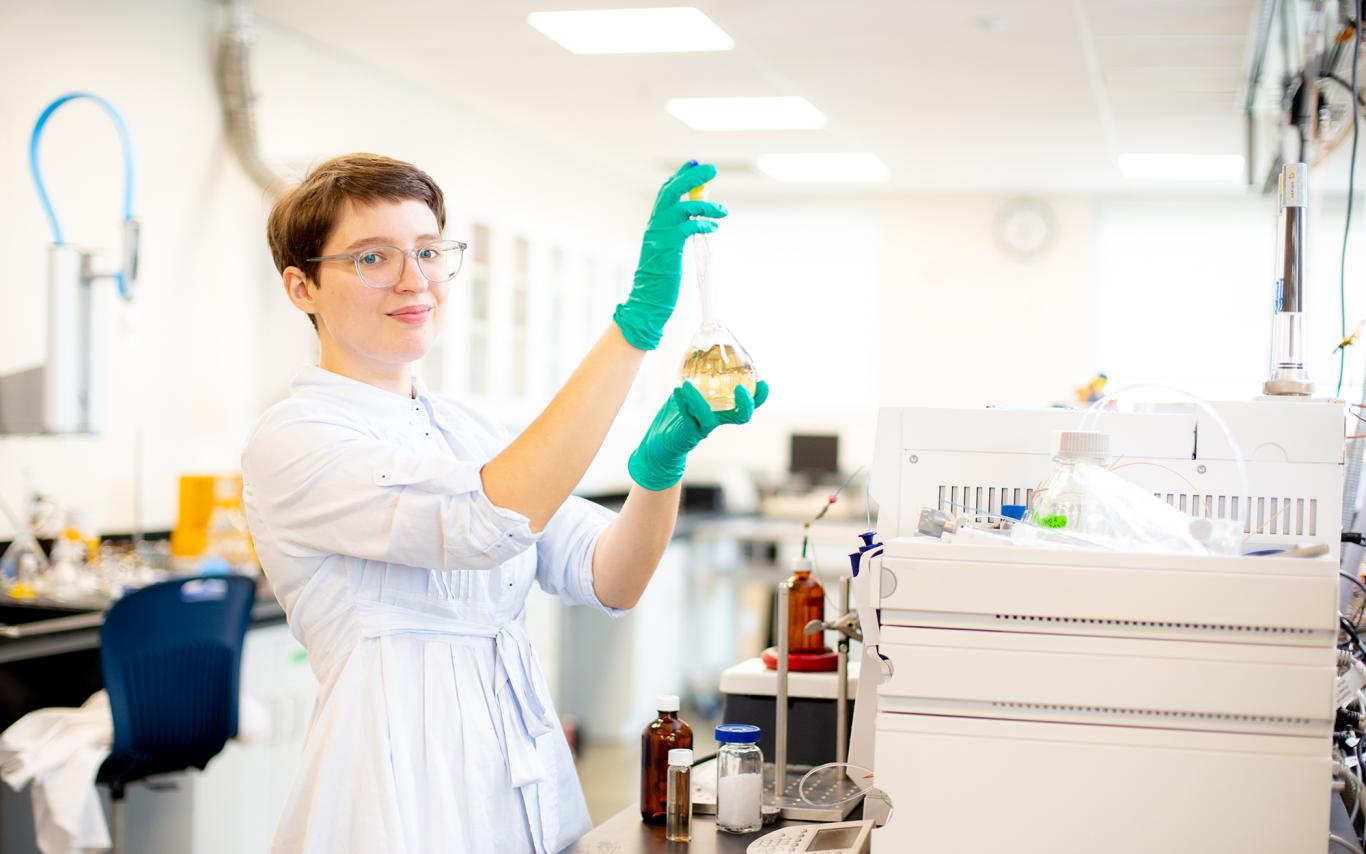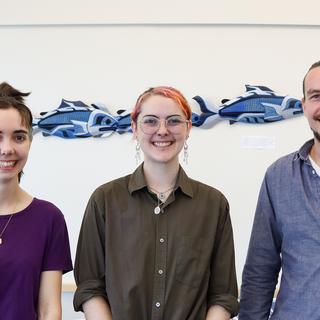Misha Zvekic examines shark during a research exchange
Forever chemicals are in our waterways and oceans. Recent research by VIU alum Misha Zvekic shows they are also turning up in marine life.
Forever chemicals, also known as Per- and Polyfluoroalkyl Substances or PFAS, are persistent, human-made substances. They’re called forever chemicals because they hardly break down in the environment and could last for decades. These chemicals are commonly found in stain-resistant and water-repellant consumer products as well as some firefighting foams.
According to Environment and Climate Change Canada, PFAS are linked to health issues in humans.
Misha is completing a master’s degree in chemistry at the University of Victoria. They are conducting their research at VIU’s Applied Environmental Research Laboratories with Dr. Erik Krogh.
Misha investigated whether PFAS were accumulating in a shark from the Salish Sea. They were also looking into whether the shark had passed these contaminants to their offspring. Or if the offspring are protected in some way.
Misha analyzed a mature sixgill shark and its pups for perfluoroalkyl substances. This shark was pregnant with 72 offspring when it died. It washed up on the shore of Coles Bay in 2019. Misha conducted their investigation during a three-week research exchange to Dr. Hui Peng’s lab at the University of Toronto earlier this year. They worked with Chemistry PhD candidate Holly Barrett.
“There are complex mechanisms whereby the mother can transfer contaminants to the offspring, but it depends on the specific contaminant,” Misha says.
While the mother had higher levels of toxic cadmium and lead than the offspring, the opposite was true for the perfluoroalkyl substances.
Misha says offloading contaminants might be a strategy for some organisms. If they are offloading them to many young, they are diluting them.
Misha says this is the first analysis of a sixgill shark from the Salish Sea for PFAS. It is a rare opportunity to examine the fate and intergenerational distribution of contaminants.
“What’s interesting about the research is the opportunity to study maternal transfer of emerging contaminants,” says Misha.
Misha says that while the evidence of maternal transfer of PFAS in humans is still in its early stages, the mechanism of transfer could be different. But understanding how maternal transfer happens in other species relates to what could potentially be happening in us.
Misha graduated in 2021 from VIU with a Bachelor of Science, double major in Chemistry and Biology. Misha was the first student to graduate from VIU’s Major in Chemistry program. The program has a unique focus on biological and environmental chemistry.

